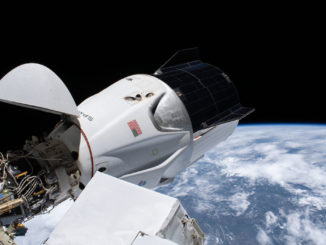A SpaceX Falcon 9 rocket successfully launched the X-37B Orbital Test Vehicle on August 21, 2025, during the USSF-36 mission from Launch Complex 39A at NASA’s Kennedy Space Center in Florida. The mission marks the eighth flight of the X-37B program, emphasizing advancements in military space technology.
The Falcon 9 lifted off shortly before midnight, with the X-37B spaceplane onboard. Air Force Rapid Capabilities Office Acting Director William Blauser stated that the mission exemplifies the X-37B’s role as a premier test platform for critical space technologies. Following the launch, the spacecraft successfully separated from the rocket at approximately 11:50 p.m. EDT (03:50 UTC on August 22).
The first stage booster of the Falcon 9, tail number 1092, completed its sixth flight, landing at Cape Canaveral Space Force Station about 8.5 minutes after liftoff. The landing was marked by a sonic boom, which has become characteristic of SpaceX’s successful recovery operations.
Mission Objectives and Technologies
The X-37B program remains largely classified, but officials have highlighted two key demonstrations for this mission: laser communications and quantum navigation. The onboard laser communication technology aims to interact with “proliferated commercial satellite networks in Low Earth Orbit,” according to the United States Space Force (USSF). While the specifics of these interactions remain unclear, it could involve either SpaceX’s Starlink satellites or other commercial satellite constellations.
Communicating via shorter wavelength infrared light enhances data transmission capacity and security compared to traditional radio frequency methods. General Chance Saltzman, Chief of Space Operations, emphasized that this advancement will significantly improve the resilience and data transport capabilities of satellite communications.
Additionally, the X-37B will demonstrate a quantum inertial sensor designed to observe atomic rotation and acceleration, facilitating navigation without GPS. This capability is particularly important for operations in environments where GPS signals are compromised or unavailable, such as cislunar space and beyond.
Future Implications of the X-37B Program
The potential applications of the X-37B’s demonstrations could enhance navigation for both U.S. spacecraft in Earth orbit and those venturing into deeper space. Col. Ramsey Horn, Space Delta 9 commander, stated that the quantum inertial sensing technology represents a significant advancement for operational resilience in space exploration.
While the exact duration of the X-37B’s mission in low Earth orbit has not been disclosed, its previous missions have varied significantly in length, underscoring the program’s versatility. Past flights have lasted from approximately 224 days to over 900 days, showcasing the spaceplane’s capabilities in extended missions.
The X-37B program, initiated in April 2010, continues to provide critical insights into the future of military space operations. As the mission unfolds, further developments will likely emerge regarding the technologies being tested and their implications for national security and space exploration.
